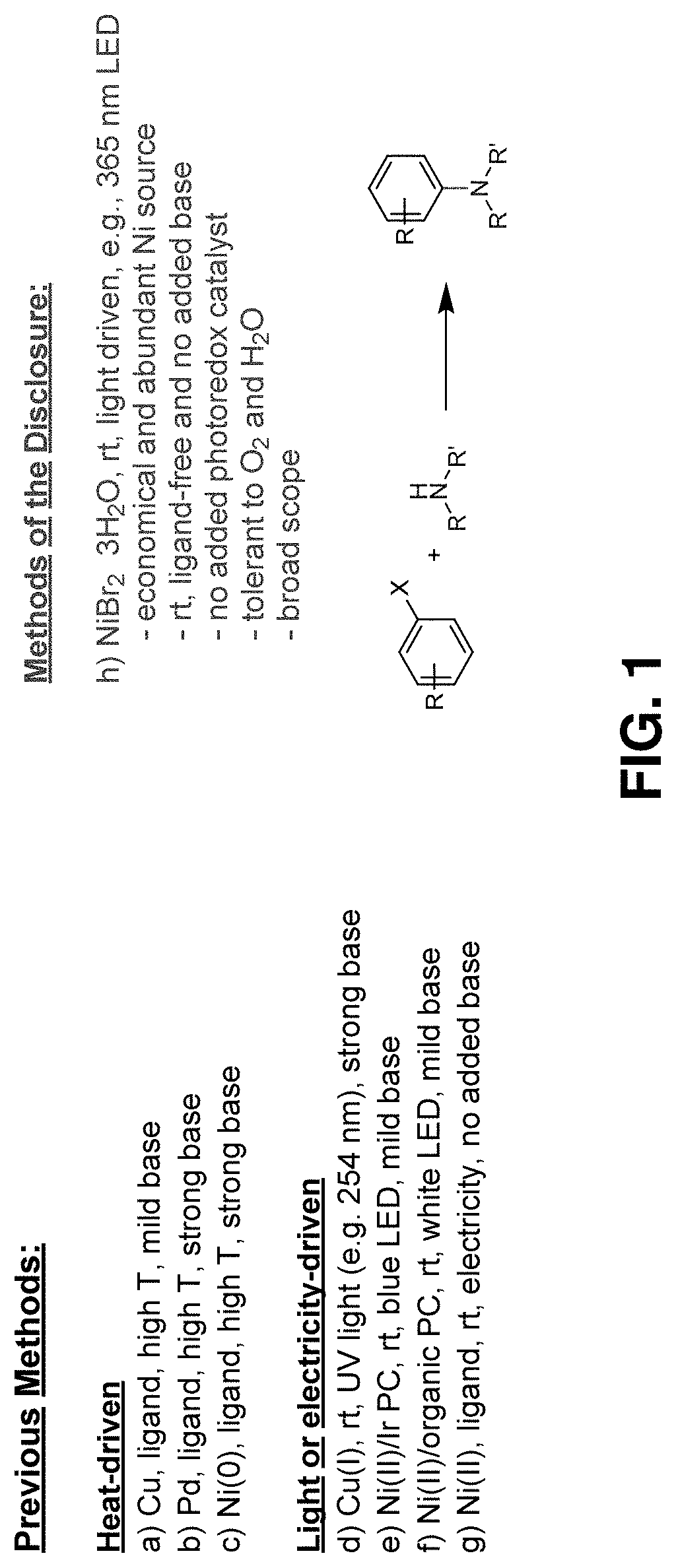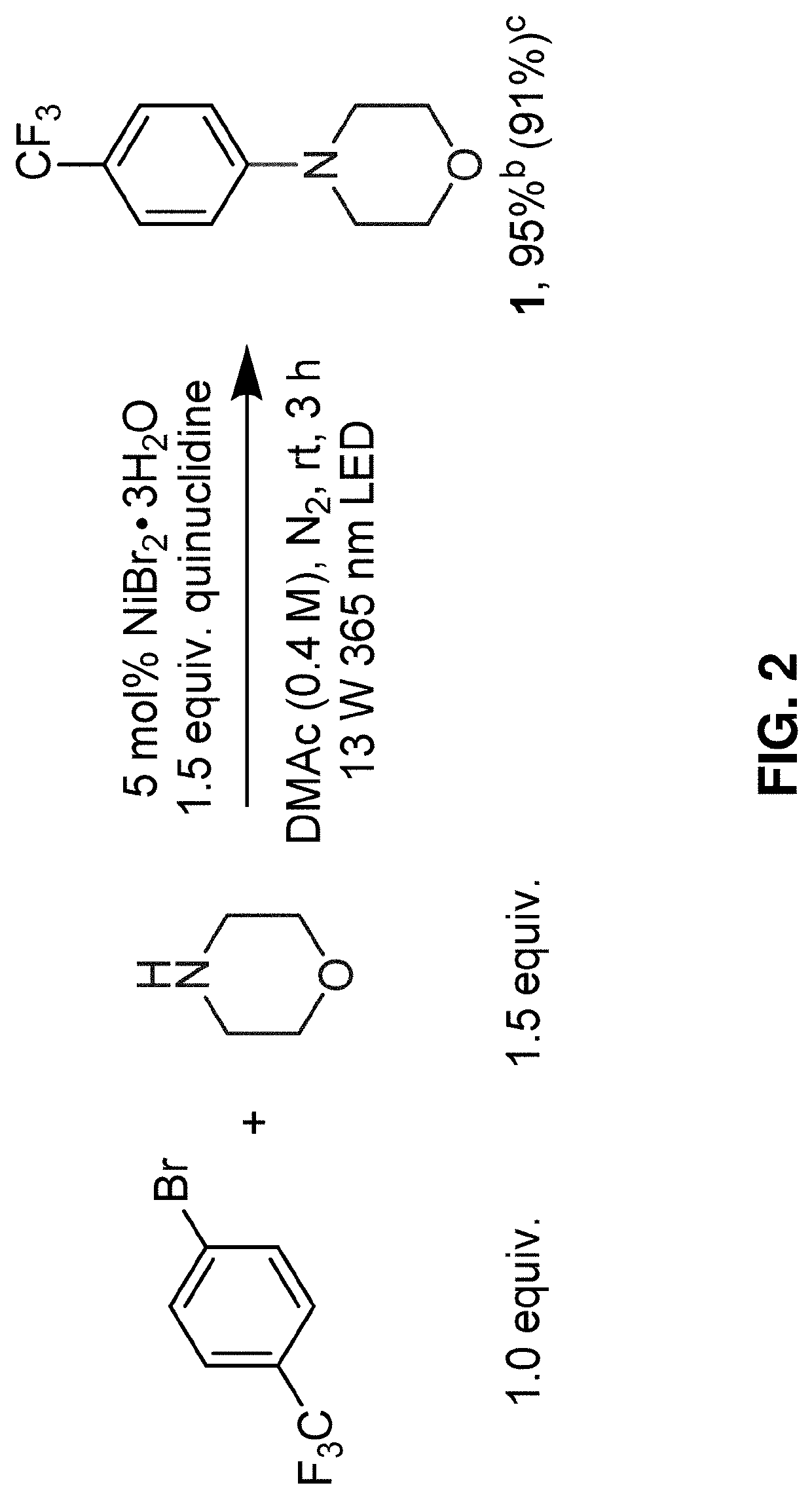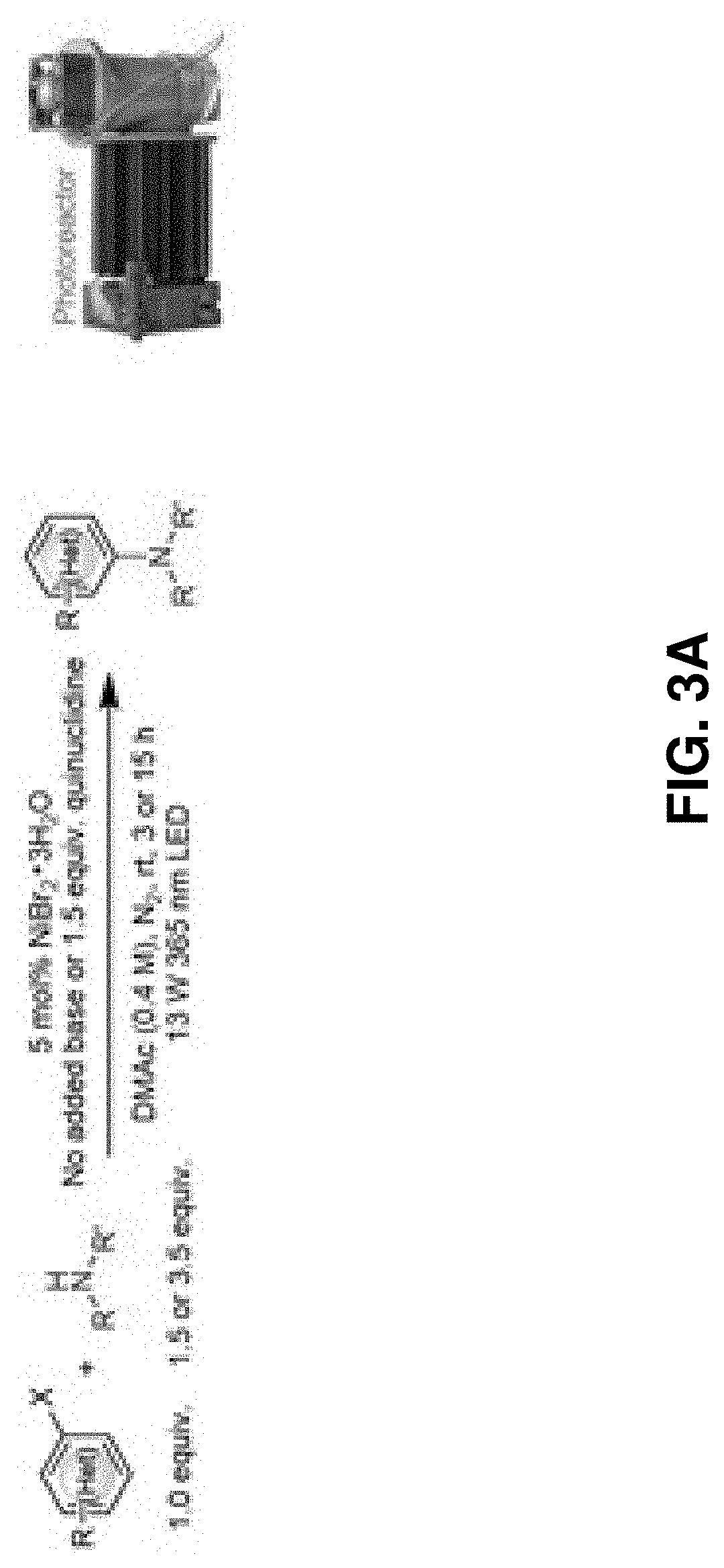Methods for forming aryl carbon-nitrogen bonds using light and photoreactors useful for conducting such reactions
a technology of carbon-nitrogen bonds and light, which is applied in the preparation of organic compounds/hydrides/coordination complexes, physical/chemical process catalysts, amino preparations from amines, etc., can solve the problems of inefficient photoreactors used in connection with such photoreactions, harsh reaction conditions, and precious metal catalysts
- Summary
- Abstract
- Description
- Claims
- Application Information
AI Technical Summary
Benefits of technology
Problems solved by technology
Method used
Image
Examples
example 1
-Coupling Via Direct Photoexcitation of Nickel-Amine Complexes
[0097]General Procedure A:
[0098]Under nitrogen atmosphere in a glovebox, a stir bar, an aryl halide (0.40 mmol, 1.0 equivalent), and 1 mL of DMAc solution containing dissolved NiBr2.3H2O (0.02 mmol, 0.05 equiv., 5.5 mg) was added to a 0.5 dram glass vial. The glass vial was then capped using a screw cap equipped with a PTFE / silicone septum and sealed with a strip of PARAFILM. The capped vial was then brought out of the glovebox and liquid amine (degassed, 1.40 mmol, 3.5 equiv.) was added via a HAMILTON syringe. Solid amines were weighed and added inside the glovebox. The capped glass vial containing the reaction mixture was then placed in a 3D-printed vial holder and subjected to 365 nm LED irradiation with fan cooling to maintain the vial at room temperature. After the time specified in the reaction schemes, the reaction mixture was washed with water, extracted with EtOAc or DCM and concentrated under vacuum. Purificatio...
example 2
ic Study
[0192]To further establish the utility of the C—N cross-coupling methodology of the disclosure, it was employed in multi-step syntheses (FIG. 12A and FIG. 12B). Recently, a visible light-driven aryl C—S cross-coupling methodology that proceeds under mild conditions to synthesize a wide range of aryl thioether products through white LED irradiation of a solution containing (hetero)aryl thiol, (hetero)aryl halide and Cs2CO3 in DMSO at room temperature in the absence of catalysts was reported.30 Using this method, aryl thioether 37 was synthesized at 56% yield which was subsequently subjected to the C—N cross-coupling conditions described herein, coupling it with 3-aminopyridine, to yield 38 in 88% yield (FIG. 12A). This example highlights two industrially important processes, namely aryl C—S and C—N cross-couplings that can be driven by light irradiation under mild conditions to reach molecular complexity.
[0193]The piperazine functionality is abundant across pharmaceutical pro...
PUM
| Property | Measurement | Unit |
|---|---|---|
| Temperature | aaaaa | aaaaa |
| Fraction | aaaaa | aaaaa |
| Fraction | aaaaa | aaaaa |
Abstract
Description
Claims
Application Information
 Login to View More
Login to View More - R&D
- Intellectual Property
- Life Sciences
- Materials
- Tech Scout
- Unparalleled Data Quality
- Higher Quality Content
- 60% Fewer Hallucinations
Browse by: Latest US Patents, China's latest patents, Technical Efficacy Thesaurus, Application Domain, Technology Topic, Popular Technical Reports.
© 2025 PatSnap. All rights reserved.Legal|Privacy policy|Modern Slavery Act Transparency Statement|Sitemap|About US| Contact US: help@patsnap.com



